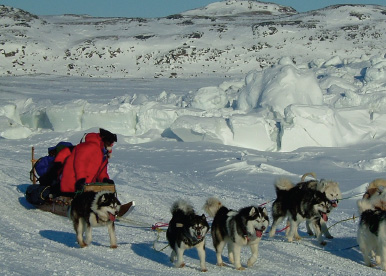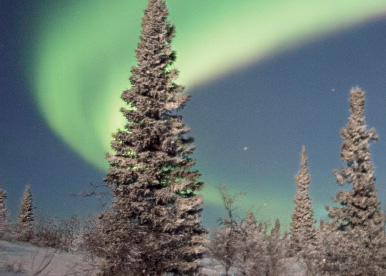
Полная версия
Serious Survival: How to Poo in the Arctic and Other essential tips for explorers
• What seems manageable for a few minutes back home may feel pretty intolerable after six hours of trekking up and down slippery slopes in humid, dense jungle.
• Getting the amount of kit down to an acceptable weight may be an almighty struggle.
• The item you desperately need always seems to end up at the bottom of the rucksack, requiring everything to come out (usually in torrential rain).
WHAT SHOULD I TAKE WITH ME ON EXPEDITION?
There are of course some absolute essentials, but the principle is to take as little as possible. Constantly remind yourself that anything that goes with you will almost certainly have to be carried on your back in a rucksack in extreme conditions – and on most expeditions you will also have to make room for group kit, such as food and pots and pans.
Your actual kit list will depend on where you’re going (see appropriate chapters for details) and on personal preference. People get very attached to particular items of kit. But a few basic principles apply:
• You generally need far fewer changes of clothes than you imagine. It is not at all unusual to manage for weeks on expedition with just a couple of sets of clothes and around three sets of underwear.
• Most personal toiletries are a complete waste of space and time. Take advice before taking hair products, creams and deodorant to, say, an environment where you’ll be dripping with sweat and covered in mud all day. Once you’ve decided what is really essential, transfer the minimum amount to small plastic bottles to save weight. Replace bulky spray cans with more compact products. For example, ditch the shaving foam and use a tiny bottle of shaving oil.
• Draw up a checklist well in advance of departure to ensure you have all essentials. Then treat them with extreme care – your life may depend on it (and replacing invaluable items once on expedition is often impossible).
EMERGENCY KIT
When travelling in an extreme environment there are various essentials you must keep with you at all times in case of emergency – primarily if lost or split off from the group.
Where you keep the kit will depend on the environment, but it should never leave your side except when safely inside camp.
In the jungle or desert many like the flexibility of the military solution – the belt kit with a series of pouches slung round the waist. (This can, however, interfere with the positioning of your rucksack waist strap, and is completely impractical if also wearing a climbing harness.)
The exact contents of an emergency kit are always the subject of debate, but as a general guide they may include the following:
water
whistle
compass
waterproof matches, candle and fire-lighting tinder such as cotton wool balls
iodine drops to purify water and to sterilise wounds
emergency snack, such as a high energy cereal bar
penknife
small torch plus spare batteries
sunblock
mosquito/insect repellent and malaria tablets (if required)
a few sheets of toilet roll
several metres of parachute cord (strong string)
personal medical kit including pain killers, plasters and rehydration salts
emergency card
In a humid or potentially wet environment the emergency kit should be packed in zip-up plastic bags, such as freezer bags.
PACKING RUCKSACKS
Packing your rucksack is quite an art. It’s not just about getting everything in, though that may be tricky enough. The load has to be balanced so it’s comfortable to wear, and you need to be able to get at essentials in a hurry. For most expeditions it all has to be waterproofed to withstand torrential downpours – and even possibly immersion in a river.
For waterproofing the principle is: ‘In a bag, in a bag, in a bag’. In other words, three layers consisting of a) smaller waterproof bags called stuff sacs, which go in b) a large waterproof rucksack liner, which goes in c) the rucksack itself. Not only will this arrangement keep the contents dry, it will also help you organise your kit as you can use separate stuff sacs for different sorts of items. You should put items you’ll need in a hurry in the stuff sacs nearest the top of your rucksack.
Any particularly heavy items should also go near the top to keep you balanced when trekking. Take expert advice on adjusting straps. Many modern rucksacks can be fitted to your body size to help distribute the weight comfortably, but you can spend many an uncomfortable hour trying to sort it out by trial and error.
If you’ll be spending several days based at the same camp, you may also want to take a much smaller rucksack with you for use when going out for the day.

Serious Arctic

All extreme environments are unforgiving, but some are definitely more unforgiving than others. Many would say the Arctic and Antarctic are the most hostile regions of all to humans – rivalled only by the freezing conditions at the top of the world’s highest peaks. Here the tiniest mistake can have catastrophic consequences. Even spilling a little water on yourself can set off a chain of events which may lead to death (see page).
Imagine living inside a freezer for weeks on end, then think way, way colder and you start to get some idea of typical polar conditions (average freezer: –18°C/–0.4°F; average Arctic winter’s day: –30°C/–22°F).
On first arrival in the region many adventurers suffer ‘Arctic Shock’, a state of near panic where their body urgently tells them it doesn’t appreciate such crazy temperatures. All they can think of is getting back into the warmth as quickly as possible.

The secret is to adopt a completely different mindset. Everything has to be adjusted to the fact that you’re boldly going where humans were never designed to be (apart from the native peoples – see Inuit Survival, page). Things that take a few seconds back in ‘civilisation’, such as getting into bed, may well need a good half hour in the freezing conditions.
The rewards are great, and not just the huge satisfaction of joining an elite band who’ve ‘been there, done that’ and lived to tell the tale. The Arctic and Antarctic are breathtakingly beautiful. Whether it’s the extraordinary ice sculptures formed by the wind and the sea, or the spectacular Northern and Southern Lights, the polar regions have an unearthly, almost spiritual appeal.
TO THE ENDS OF THE EARTH
The first explorers to take on the North and South Poles were phenomenal pioneers, heading into some of the harshest conditions on Earth without any of the safety nets modern adventurers take for granted, such as GPS satellite navigation devices and satellite phones to call in assistance.
The famous race for the South Pole in 1911 saw the Norwegian team headed by Roald Amundsen triumph over their British rivals led by Captain Robert Scott. The British team did reach the Pole just over a month after the Norwegians, but tragically all died on their return journey.
The American Robert Peary is often credited as being the first to get to the North Pole, in 1909, but this is disputed. An American team made it in 1968, using snowmobiles, while the first confirmed non-mechanized conquest was made by a British team in 1969.

ARCTIC V ANTARCTIC
The two polar regions on the planet share much in common. They do, however, have some significant differences (see below).
ARCTICANTARCTICMade up of the Arctic Ocean (much of it frozen) surrounded by the northernmost parts of several countries including the USA (Alaska), Canada, Greenland, Norway and Russia.A huge continent covered in ice. No country owns Antarctica.The North Pole is located in an area of frozen sea ice that constantly drifts and breaks up. Adventurers find it hard to stay precisely at the Pole as the ice sheets shift beneath their feet.The South Pole is located pretty well in the middle of the Antarctic land mass, at an altitude of almost 3,000m (10,000ft). A ceremonial pole and flag has been planted at the South Pole and there is a permanent scientific research station nearby.Inhabited sparsely by indigenous peoples.Has no native peoples.The kingdom of the polar bear, plus other mammals including caribou and foxes. (But absolutely no penguins!)The kingdom of the penguin.Has no land-based mammals at all.
THE LAND OF THE MIDNIGHT SUN
The Arctic Circle is a special line of latitude at around 66°N. It marks the furthest distance from the North Pole where each year you get at least one full 24-hour day when the sun doesn’t set, and one full day of complete darkness. As you get nearer to the Pole there are more and more summer days when the sun doesn’t set, and more winter days when the sun never rises. At the Pole itself you get six months of daylight followed by six months of darkness.
The same properties apply to the Antarctic Circle at 66°S, though with the seasons reversed.


THE NORTHERN AND SOUTHERN LIGHTS
Also known as the Aurora Borealis and Aurora Australis, the Northern and Southern Lights are shimmering, ever-changing curtains of light in the night sky, caused by radiation from the sun hitting the Earth’s magnetic field near the Poles.

© Matthias Breiter/Minden Pictures/FLPA
Конец ознакомительного фрагмента.
Текст предоставлен ООО «ЛитРес».
Прочитайте эту книгу целиком, купив полную легальную версию на ЛитРес.
Безопасно оплатить книгу можно банковской картой Visa, MasterCard, Maestro, со счета мобильного телефона, с платежного терминала, в салоне МТС или Связной, через PayPal, WebMoney, Яндекс.Деньги, QIWI Кошелек, бонусными картами или другим удобным Вам способом.



